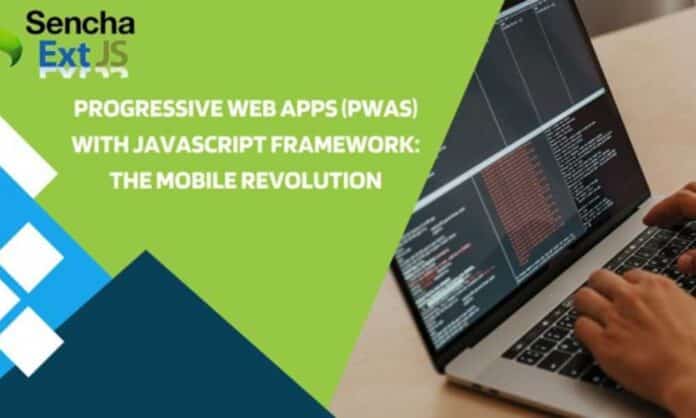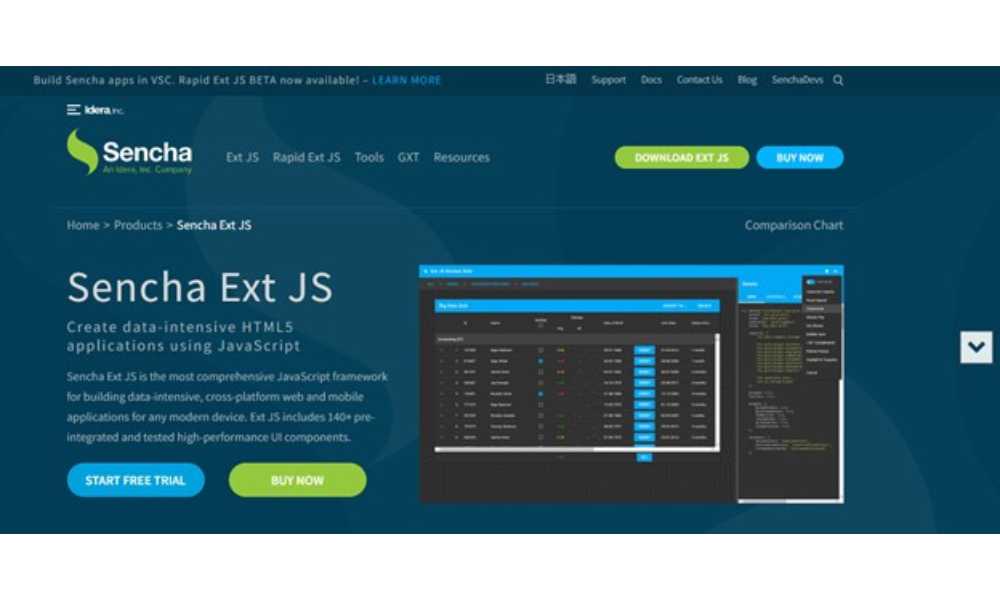As we know, people are creating applications for multiple purposes in today’s era. During this time, Progressive Web Apps (PWAs) have emerged as an amazing and magical solution. While developing these applications, we blend both native web technologies and mobile apps, therefore enhancing the user experience.
It’s important to note that the JavaScript Framework lies at the heart of Progressive Web Apps. A JavaScript framework is a widely accepted tool for PWAs.
In this developer-focused blog post, we will delve into Progressive Web Apps. We will also explore the role of the JavaScript framework in shaping the Progressive Web Apps revolution. So, what are you waiting for? Let’s continue reading until the end.
What Are Progressive Web Apps?
Progressive web apps offer a cutting-edge experience for web applications. In other words, they provide a native app-like experience entirely through the web. You can also say that they represent a new breed of web applications. In progressive web apps, we leverage contemporary web technology. This technology helps us deliver an engaging, reliable, and responsive user experience.
The best part about these apps is that they load instantly. Moreover, they can also function online and can be installed on the home screen of a user without the need for an app store.
These benefits make progressive web applications a significant part of the mobile revolution. Let’s explore why JavaScript is considered an ideal programming language for progressive web applications.
Why JavaScript Is Ideal for Progressive Web Apps?
If you are a developer, you must understand the importance of JavaScript in various fields of web development. It is highly compatible and flexible with multiple web technologies, making it an ideal choice for creating progressive web applications and interactive, dynamic web applications. As we know, creating interactive and dynamic web applications is the need of today, where reliable applications are expected to be interactive and responsive.
The primary reason to use JavaScript for creating PWAs is that it helps run applications across a wide range of platforms and devices. Moreover, it can eliminate complex barriers to reach a broader audience.
How to Use Javascript for Creating Progressive Web Apps?
There are multiple steps to create progressive web applications using JavaScript. Let’s discuss all those stages one by one:
Service Worker Implementation
It’s important to note that service workers are fundamental parts of progressive web apps. In other words, they are responsible for background synchronization, caching, and offline functionalities. JavaScript helps implement service workers without complex coding. Therefore ensuring that our progressive web apps work perfectly fine even without an internet connection.
Check out: Top Node.js Development Trends That You Should Consider
Enabling Offline Functionality
JavaScript allows us to cache assets and data. It helps ensure that our applications can operate even without an internet connection. Users can interact with the application and access content without a network connection.
Creating an Interactive User Experience
We create progressive web applications to deliver an engaging user experience to our customers. Ext JS is one of the most powerful JavaScript frameworks for creating such applications. This framework can help us achieve an interactive user interface and a responsive web application. Therefore guaranteeing that customers can interact with our application as they would with a native mobile application.
Sencha Ext JS
We can also use JavaScript frameworks to create progressive web applications. Sencha Ext JS is one of the most popular frameworks for creating enterprise-level progressive web applications. It provides access to panels, trees, forms, and charts. These components enable us to create exceptional applications for enterprise-level customers.
It’s important to note that these components are highly customizable. Therefore allowing us to change the appearance and layout of our website as needed.
One of the best aspects of this framework is its efficiency in handling data. For instance, it comes with data models, stores, and proxies. Therefore making it easier for us to fetch, manage, and deliver data more effectively. This capability is invaluable for building powerful and data-driven progressive web applications.
What Are the Best Practices to Optimize PWA Performance?
Now that you have learned about progressive web applications, it’s important to understand the performance optimization of these applications. We have listed some best practices to achieve the best performance for our progressive web app. Let’s go through them one by one:
Lazy loading helps prevent the loading of unnecessary resources. For example, if you need to load the home page of a website, but the website loads all the pages at once. This can slow down the speed of the website. When lazy loading is implemented, it only loads the page that you requested. Therefore reducing initial page load times and enhancing overall performance.
Code splitting refers to dividing your JavaScript code into smaller and manageable pieces. This strategy also leads to faster initial loading times. Therefore reducing the time it takes to begin interacting with progressive web applications.
It’s important to follow efficient coding practices when writing code for your progressive web application. These practices help your application update smoothly. You should make use of modern JavaScript features, minimize unnecessary code, and optimize loops. This can significantly enhance the performance of your web application.
Conclusion
Progressive web applications are indeed the future of mobile application development. They help achieve engaging, responsive, and seamless user experiences. With JavaScript as the driving force, developers can create amazing, progressive web applications. Additionally, using JavaScript frameworks provides valuable resources for enhancing the functionality and performance of these applications. Therefore making them a key component in the evolving landscape of mobile app development.
FAQs
What Is the Framework of JavaScript?
A framework gives us pre-built UI components for building our application.
What Is a JavaScript Framework Examples?
Ext JS is one of the most popular examples of JavaScript frameworks.
What Is the Easiest JavaScript Framework?
Ext JS is easier to learn due to the availability of many online resources.
Which JS Framework to Use?
Use Ext JS for enterprise-level web applications.
Check out: The Most Effective Way to Hire Flutter App Developers





